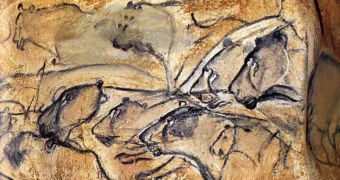Since global warming is threatening to wipe out several World Heritage sites across the world, it is especially good to hear that a new one has recently been designated, possibly in an attempt to keep the overall count steady.
Thus, word has it that delegates with UNESCO's World Heritage Committee have recently agreed to stick a hot poker into one of the walls of a cave in France and brand it a World Heritage site.
OK, the part about the hot poker might not be true to facts, but the fact that Grotte Chauvet has been awarded World Heritage status and can now brag about it to its friends is very much true.
According to Daily Mail, the cave in question dates back to prehistoric times, but was only discovered a couple of decades ago, in 1994. It is located in France's Ardeche region, and its walls are decorated with about 1,000 drawings.
The reason why researchers remained oblivious to the existence of this cave in France for decades is because, about 23,000 years ago, a rockfall sealed the entrance to Grotte Chauvet, information shared with the public says.
By the looks of things, three French cave experts were the ones who discovered the cave two decades ago and alerted authorities and the scientific community about their find. Shortly after, France embraced Grotte Chauvet as a protected heritage site.
Investigations carried out since the cave was discovered until present day have revealed that the drawings on its walls were created about 36,000 years ago. Hence, they are hailed as one of the earliest evidence of human culture in Europe.
“The large number of over 1,000 drawings covering over 8,500 square metres (90,000 square feet), as well as their high artistic and aesthetic quality, make Grotte Chauvet an exceptional testimony of prehistoric cave art,” UNESCO says.
“Its state of preservation and authenticity is exceptional as a result of its concealment over 23 millennia,” the United Nations Educational, Scientific and Cultural Organization goes on to explain the listing of Grotte Chauvet as a World Heritage Site.
Apart from drawings of human hands and animals such as mammoths, wild cats, rhinos, bison, and bears, this prehistoric cave in France is home to several remains and paw prints left behind by animals that probably hibernated inside it thousands of years ago.
To ensure that neither the 36,000-year-old drawings nor the animal remains and paw prints will be destroyed in the years to come, authorities have agreed to only allow about 200 researchers to enter this cave on a yearly basis.

 14 DAY TRIAL //
14 DAY TRIAL //